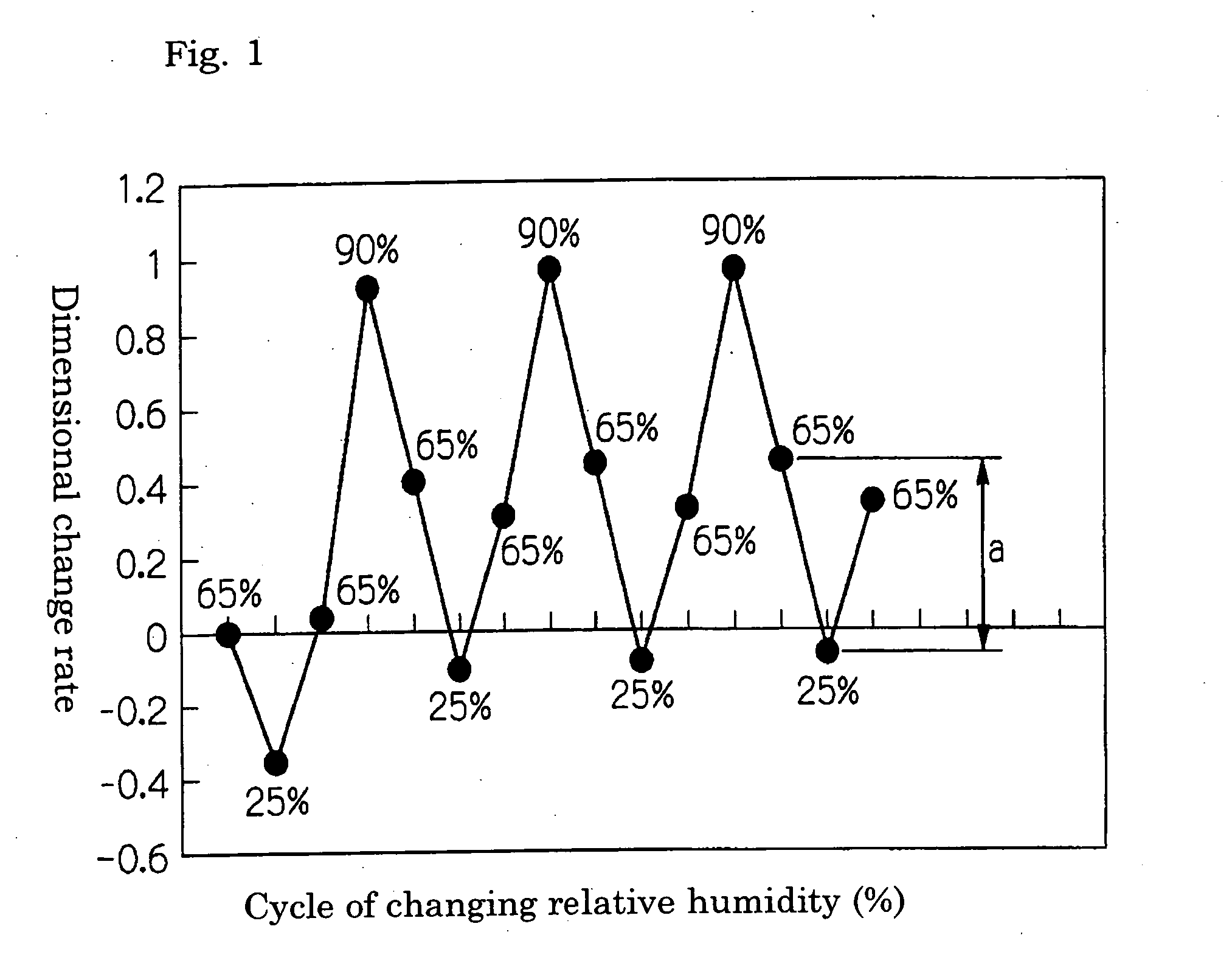Recording sheet and image recording method using the same
a recording method and image technology, applied in the field of recording sheets and inkjet recording methods using sheets, can solve the problems of reducing print productivity, heavy curling and cockling, and rubbing of the image parts in the printer, and achieve the effects of reducing print efficiency, reducing printing efficiency, and reducing production costs
- Summary
- Abstract
- Description
- Claims
- Application Information
AI Technical Summary
Benefits of technology
Problems solved by technology
Method used
Image
Examples
examples 1 to 15
, Comparative Examples 1 to 10
[0273] Image recording is conducted on each of the aforementioned recording sheets by an ink-jet recording system or an electrophotographic system to confirm the characteristics as a recording sheet. The recording sheets and conditions of ink-jet recording in examples and comparative example are collectively shown in Table 3.
(1) Evaluation in an Ink-jet Recording System
[0274] Evaluation of printing is conducted at 23° C. under 50% RH, wherein a multi-pass printing thermal ink-jet recording device is used for evaluation which is provided with four recording heads and the following conditions are adopted: ink discharging nozzle pitch of the printing head: 800 dpi, number of ink discharging nozzles: 256, discharge amount: about 15 pl, the amount of ink to be provided is set to two levels, 10 ml / m2 (standard) and 7.5 ml / m2. The printing is carried out in one-side batch printing at a head scan speed of about 28 cm / sec.
[0275] Various evaluations after pri...
PUM
| Property | Measurement | Unit |
|---|---|---|
| weight | aaaaa | aaaaa |
| length | aaaaa | aaaaa |
| temperature | aaaaa | aaaaa |
Abstract
Description
Claims
Application Information
 Login to View More
Login to View More - R&D
- Intellectual Property
- Life Sciences
- Materials
- Tech Scout
- Unparalleled Data Quality
- Higher Quality Content
- 60% Fewer Hallucinations
Browse by: Latest US Patents, China's latest patents, Technical Efficacy Thesaurus, Application Domain, Technology Topic, Popular Technical Reports.
© 2025 PatSnap. All rights reserved.Legal|Privacy policy|Modern Slavery Act Transparency Statement|Sitemap|About US| Contact US: help@patsnap.com


